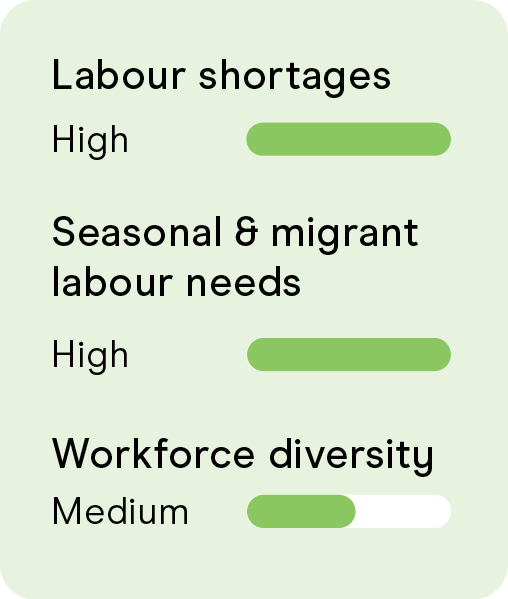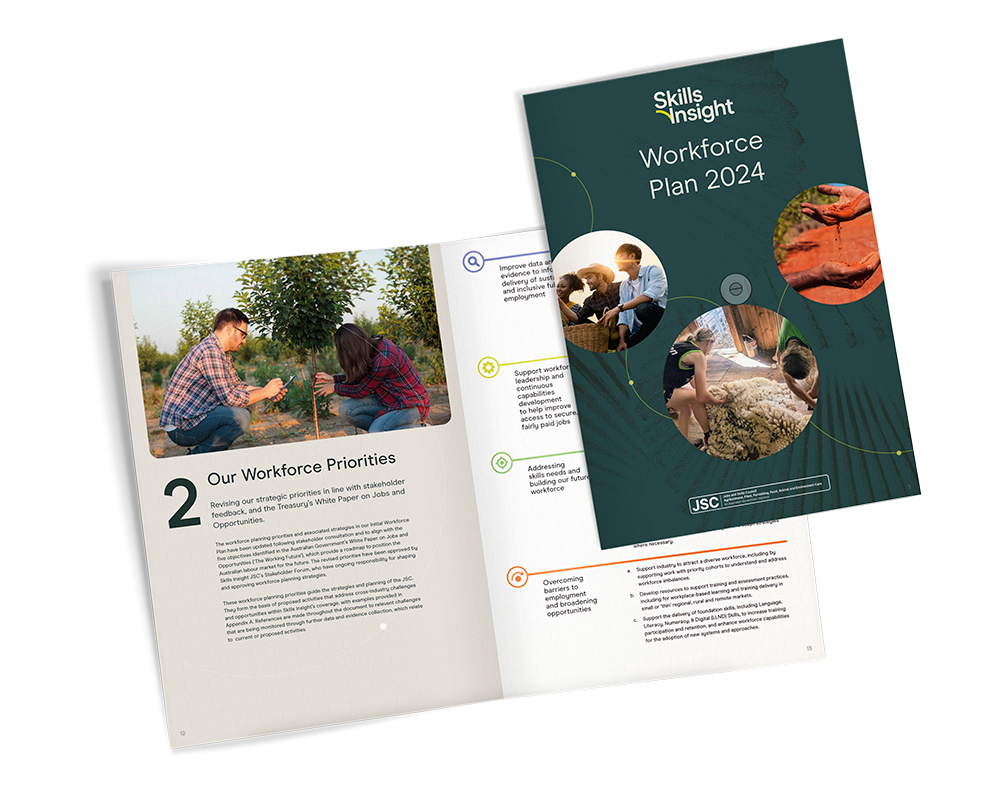A diverse industry that plants, grows and harvests fruit, nuts, vegetables and nursery products on a large scale, in both under-cover (hydroponics/greenhouse) and outdoor (field) systems.
Key updates
Decline in overall horticulture farm labour use
Data from the ABARES’ farm survey reported a decrease of 20% in total labour use since 2020, including both domestic and migrant workers. This is consistent with the declining number of Australian workers in key occupations (crop farmers, crop farm workers, and packers) in the ABS’s Labour Force Survey and stakeholder feedback on recovery from the significant workforce disruption caused by the COVID-19 pandemic.
Robust growing conditions are heralding high labour demand
The industry has seen minimal frost events and good rainfall from the latest La Nina cycle, leading to reports of record crop volumes. However, data from the ABS’ Labour Force Survey in Nov 2023 suggest insufficient labour, as the number of hours worked per person rose to an all-time-high for some key occupations (e.g. crop farmers and crop farm workers at 86.5 hrs/week).
Seasonal labour supply boosted by increase in Pacific Australia Labour Mobility Scheme (PALM) workers
Despite challenges in domestic labour supply, Migration Statistics showed that the number of PALM workers increased from 4,629 in 2022 to 30,350 in 2023.
Opportunities
Job mobility
Regional differences in horticulture labour use can enable greater mobility throughout the year.
Technological advances
Adoption of computer-controlled production systems have enabled growers to consistently grow quality products, whilst limiting costs and environmental impact.
Policy changes
From 2025, intentional wage underpayments by employers will be a criminal offence. In addition to higher minimum wages and piecework rates in the Horticulture Award in 2022, these are positive catalysts for improved working conditions.
Challenges
Skills shortage
Parts of the industry remain highly reliant on seasonal and temporary migrant labour needs. Where return rates are low, this generates high training and administration costs that can negatively impact workforce efficiency.
Input costs/output prices
Whilst the value of commodities are forecasted to fall in 2023-24, farm input costs remain high that may impact work attractiveness and workforce development.
Impact of Trade Agreements
The recent trade agreement with the UK, has resulted in a lack of UK backpackers, which has raised concerns about temporary labour availability in the industry.
Data monitoring priorities

75,892
workers
(2021 Census)
1.9%
First Nations
(2021 Census)
6,600
2028 Projection
(JSA Projections)

36%
Female
(2021 Census)

Workforce Plan 2024
The Workforce Plan describes workforce challenges and skill opportunities identified by stakeholders across the industries we work with and outlines strategies to address them.
The 2024 Workforce Plan outlines four key Workforce Planning Priorities to guide the strategies and planning of our JSC work, retaining the strategic intent of the Initial Workforce Plan, with modifications to align with the Australia Government’s White Paper on Jobs and Opportunities.